KEY TAKEAWAYS:
Using studio monitors for a home theater is almost always a bad idea. This is because they do not have the right sound profile or projection for use in a home theater. You will want to use speakers made for the said purpose in a home theater setting.
Studio Monitors For Home Theater
In the home theater audio/video gear world, knowing what you can and cannot do can be challenging.
Investing in the right equipment for your home theater setup will save money and time.
Over time, I have listened to many different types of speakers and judged their performance in various scenarios.
This article will determine whether using studio monitors in a home theater is good or bad.

Can You Use Studio Monitors As Home Theater Speakers?
Technically, you should be able to connect studio monitors for use with your home theater easily. First, find the audio outputs on your home theater setup. Then locate the audio inputs on your studio monitors. Finally, acquire some cables/other applicable gear to connect the two.
However, I do not recommend using studio monitors as home theater speakers. This is because of their sound profile, frequency response, and sound projection.
Music production and the viewing of film and television are two different things. Therefore, they require other audio equipment.
READ NEXT:
There are other possible uses for studio monitors. Check out our article on using studio monitors as TV speakers.
Studio Monitors Vs. Home Theater Speakers – What’s the Difference?
Let’s take a look at some of the critical differences between studio monitors and home theater speakers:
Frequency Response
One difference between studio monitors and home theater speakers is the frequency response.
For example, studio monitors have a very flat frequency response. This is because they are for analyzing sound and mixing/mastering music. Studio monitors are built for accuracy, clarity, and precision.
On the other hand, speakers for use in a home theater system do not have as flat of a frequency response. Home theater speakers will often have boosted low-end (bass). They will also have other frequency treatment that helps enhance the viewing experience.
The low-end presence in home theater speakers gives sound effects that extra bass. This makes it feel like you’re right there in the film.
You will not be happy with the amount of low-end/bass power if you use studio monitors as a part of your home theater system.
Sound Projection
The next difference between a studio monitor pair and a set of home theater speakers that I want to go over is how they project sound.
Sound projection determines how a speaker projects audio which plays a huge role in filling a space with sound.
For example, because studio monitors are for audio production, which usually involves the user working at a desk with the speakers nearby, they will usually be near-field or mid-field speakers. This means they are not made to fill up an entire room or theater space with sound. They are for personal use in the studio for music/audio production applications.
Use studio monitors as a home theater speaker setup. You may be unhappy with their performance in terms of stereo spread. They have trouble enveloping you with the sound of the film/TV show you are watching.
Aesthetics
Sound quality alone may not be enough to make you reconsider using a studio monitor setup with your home theater system. Let’s also consider aesthetics, the way your speakers look in your home theater.
Studio monitors are for use in the studio and not your home theater. For this reason, a studio monitor speaker will almost always look out of place in a home theater (unless this is simply the look you desire).
Home theater speakers look more like furniture than studio monitor speakers. This is why they look much more natural in a home theater environment.
There are also home theater speakers that you can install into your ceiling/walls for extra concealment.
Unless you want your home theater to have a studio vibe, I recommend using a speaker system made for home theater applications.
Are Studio Monitors Good For A Home Theater?
No. Studio monitors are high-quality speakers that accurately reproduce audio. Still, they are not suited for home theater rig use.
The only reason that you should use studio monitors in a home theater is if you have no other options.
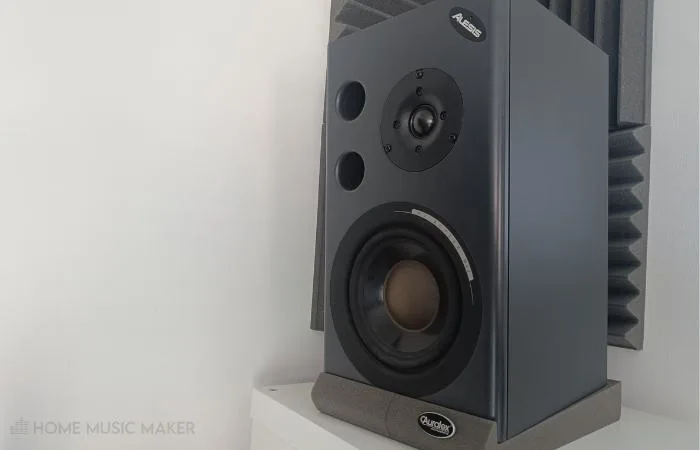
Are There Any Downsides To Using Studio Monitors As Home Theater Speakers?
Yes, here are the downsides to using studio monitors as home theater speakers:
- They have a flat frequency response.
- They do not have the sound projection of quality home theater speakers.
- They do not fit aesthetically in most home theaters.
- They will leave you underwhelmed in terms of their stereo spread.
Do You Need Additional Equipment To Use Studio Monitors With A Home Theater?
This depends on the audio system that you currently have running in your home theater.
In most cases, you will only need additional cables to connect your studio monitors. Still, at other times you might need an audio converter, a power amplifier (if you choose to use passive speakers), or a set of speaker stands.
Using your studio monitor speakers as home theater speakers should be easy. Still, it will often require at least a small extra investment.
Active Speakers Vs. Passive Speakers – What’s The Difference?
Let’s take a look at the differences between active and passive speakers.
Advantages Of Active Speakers
- They have built-in power, so they do not require an additional investment in a power amplifier.
- It is more common to design an active speaker these days. This means the best studio monitors on the market will more commonly be an active speaker design.
Disadvantages Of Active Speakers
- They require power from a power outlet which may put some constraints on placement.
- You can not upgrade their power supply since it is built-in.
- An active speaker is heavier than a passive speaker.
Advantages Of Passive Speakers
- They have fewer cables connected to them which makes them easier to place.
- You can upgrade your power amp anytime, unlike the built-in power amps of active speakers.
- They are often lighter weight than powered speakers.
Disadvantages Of Passive Speakers
- They require an investment in an external power amplifier.
If I had to recommend one or the other, I would recommend an active monitor over a passive one. Overall, it’s more accessible due to its built-in power source.
READ NEXT:
Unsure whether you need studio monitors? Check out our article on whether studio monitors are necessary.
How To Connect Studio Monitors To A Home Theater
Connecting studio monitors to your home theater should be straightforward, depending on your specific setup.
Step One – Find Your Home Theater Rig’s Audio Outputs
Find the available audio outputs on your home theater’s audio system to connect studio monitors to your home theater.
To do this, locate the component in your home theater rig that accounts for audio output and take note of the outputs that it has.
Here are some of the most common audio output types that you might see:
- Optical
- RCA
- 3.5mm (Aux)
- ¼”
- XLR
- Speaker wire (for passive speakers)
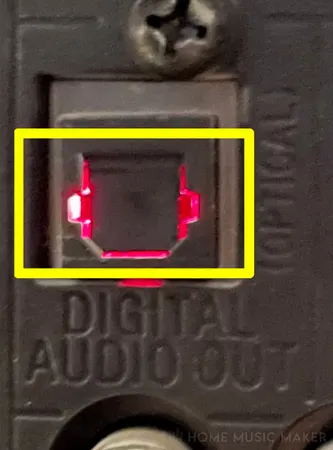
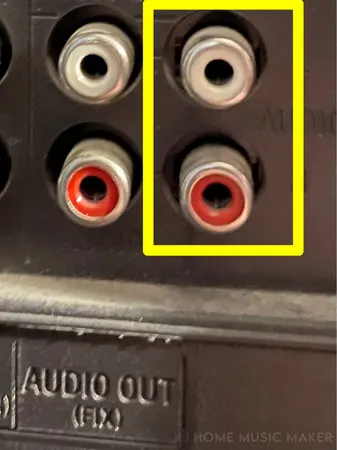
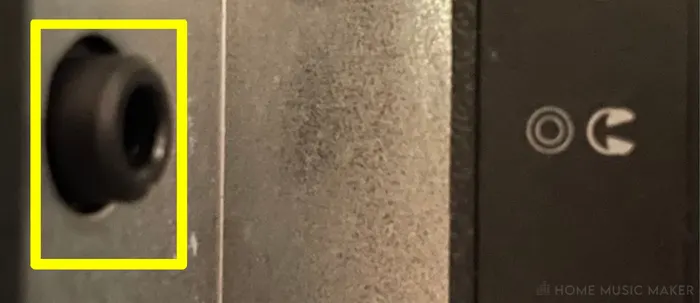
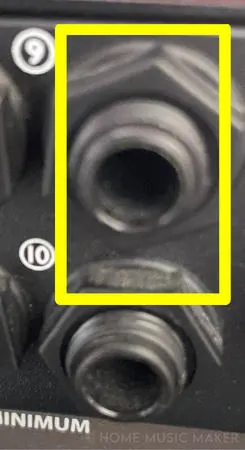
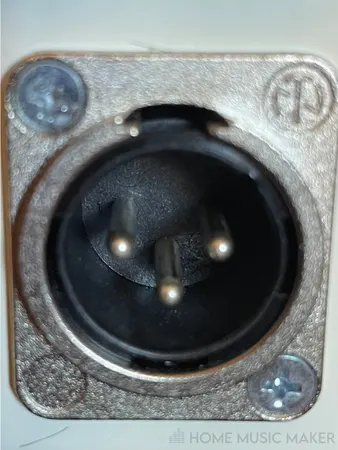
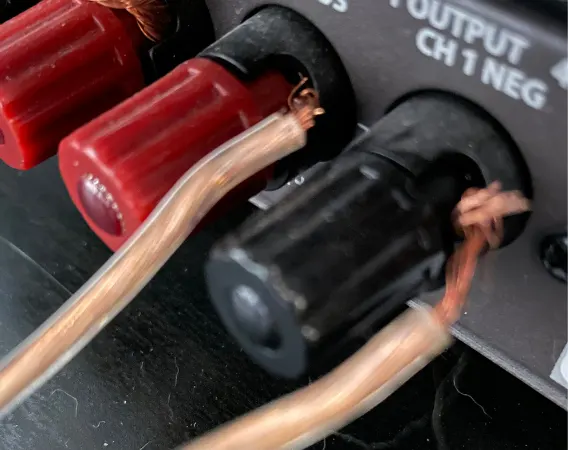
Once you have found and identified the audio outputs on your home theater system, you’re ready to move on.
Step Two – Find Your Studio Monitors’ Audio Inputs
The next step is to find the audio inputs on your studio monitor speakers.
For example, my main studio monitors have combo jack inputs, which means they can accept ¼” and XLR connections.
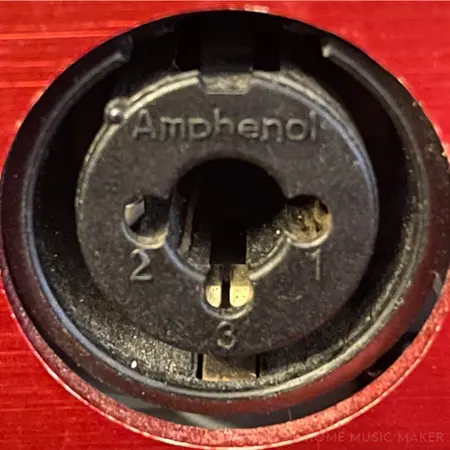
On the other hand, my passive speakers have only speaker wire inputs.
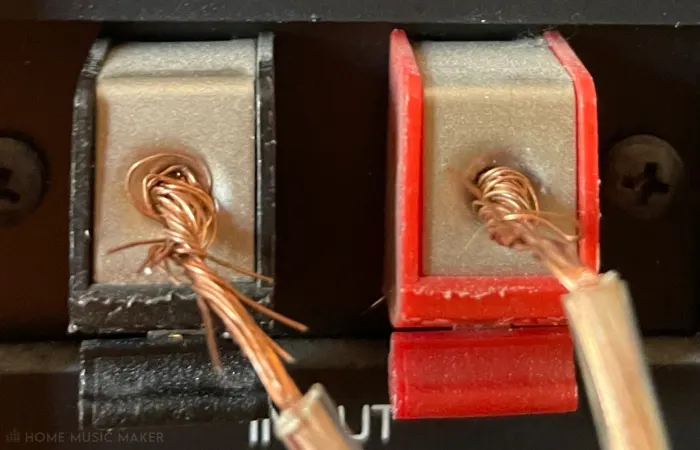
Look at the back of your studio monitors and take note of their audio input options. Once you have done this, you are ready for step three.
Step Three – Find A Cable That Can Connect The Two and Fire It Up
The final step for connecting studio monitors to your home theater system is finding the cables you need and wiring them up.
Pro Tip
If your home theater audio system and your studio monitors don’t have the same type of output/input, don’t worry. You will likely find a cable that can join the two together.
In most cases, you will only need cables to connect your studio monitors. Keep in mind sometimes you will need additional gear. You may need an audio converter, a power amplifier (for passive speakers), or speaker stands.
Connecting studio monitors to a home theater system is simple, depending on your specific setup.
Related Questions
Do You Need Powered Monitors For Home Theater?
Whether you use powered (active) or passive speakers for your home theater is totally up to you. Either type of speaker is a viable option for your rig!
Keep in mind that passive speakers require external power from a power amplifier. This means an additional investment for you.
When Might You Want Studio Monitors In Your Home Theater?
Here are some reasons that you might want to use studio monitors in your home theater:
– You need the money for proper home theater speakers. However, you have some spare studio monitors on hand.
– You like the flat frequency response that studio monitors give you compared to home theater speakers.
– You prefer the near-field sound profile of studio monitors over the wide stereo spread of other speakers.
Although I do not recommend using studio monitors for your home theater, there are a few cases in which you might want to do so.
Do You Recommend Having Surround Sound In Your Home Theater?
Yes, I do. Having surround sound in your home theater can make a world of difference. It can help you immerse yourself in the film or TV show you are watching.
Although it can be pricey or sometimes cumbersome to get set up, having surround sound in your home theater is worth it.
Is It Expensive To Add a Home Theater In Your Home?
In most cases, yes. It will not be cheap if you want a quality home theater setup.
This is because a home theater system requires a lot of equipment. For example, you have to worry about the sound system, the screen, the projection, and the seating itself.
Is a Subwoofer Necessary In a Studio?
No, a subwoofer is not necessary for most studio setups.
A subwoofer can significantly upgrade your studio setup, primarily if you work in bass-heavy genres, but it is unnecessary.
Final Words
As I have shown you, using studio monitors for your home theater is possible but not the best option.
Studio monitors do not have the right sound profile, sound projection, or cosmetic appearance for use in a home theater. Therefore we should keep them in the studio. We call them studio monitors for a reason.
Not all speakers are the same, and you should use speakers specifically for home theater use with your home theater setup.
READ NEXT:
Check out our article on PA Speakers Vs Studio Monitors.

 Want to connect with other music producers for help and guidance?
Want to connect with other music producers for help and guidance?